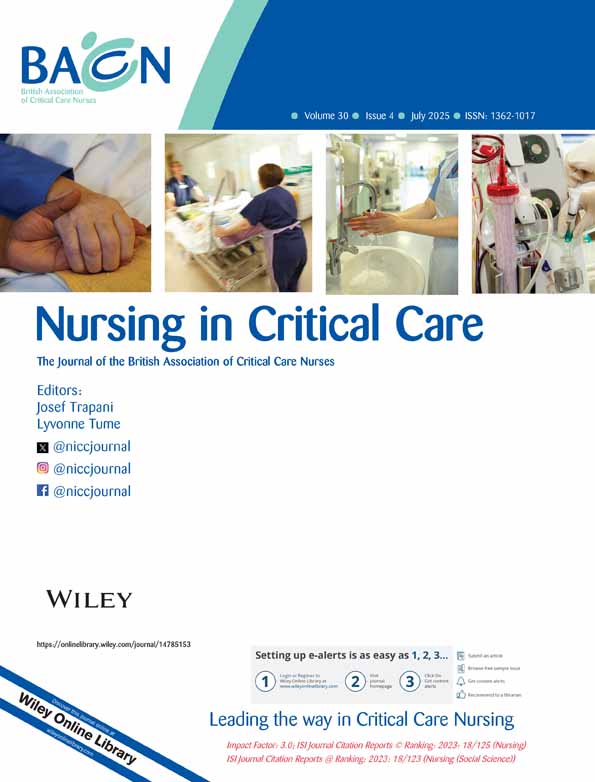Characteristics and Risk Factors of Oral Endotracheal Tube-Related Mucous Membrane Pressure Injury in Intensive Care Units
Funding: This work was supported by SuZhou Minsheng Science and Technology Project (SYSD2020099), The 11th Batch of Science and Technology Development Plan of Suzhou, Medical Application Basic Research (SKY2023125) and Guangzhou Concord Medical Humanities Research and Education Fund (23000-3050070).
ABSTRACT
Background
Device-related pressure injuries in critically ill patients have gained significant attention, yet limited research has specifically focused on oral endotracheal tube-related mucous membrane pressure injury (OETMMPI) in intensive care unit (ICU) settings. Comprehensive assessment of intra- and extra-oral factors is crucial for accurately characterizing OETMMPIs and identifying broader risk factors may enhance prevention strategies.
Aim
To investigate the characteristics and factors associated with OETMMPI in ICUs.
Study Design
A retrospective observational study.
Results
OETMMPIs in ICU patients can occur inside and outside the oral cavity, most frequently on the lower lip (35.3%, n = 41), palate (19.8%, n = 23), lingual surface (19.0%, n = 22) and mouth corners (17.2%, n = 20). The highest proportion of injuries occurred on Day 2 post-intubation (43%), with a mean onset time of 4.74 ± 1.82 days. Logistic regression identified primary diagnosis, disease outcome, intubation time and length of stay as statistically significant (p < 0.05). Cardiovascular disease (OR = 12.183, p = 0.037), death (OR = 14.281, p = 0.001), intubation time (OR = 1.191, p = 0.003) and length of stay (OR = 1.049, p = 0.007) emerged as statistically significant factors of OETMMPIs in this study.
Conclusions
OETMMPIs are more likely to occur after 4 days of intubation and are linked to cardiovascular disease, poor outcomes and prolonged ICU stays. Their occurrence may indicate disease progression, underscoring the need for early, site-specific oral assessments and preventive care in critically ill patients.
Relevance to Clinical Practice
Close monitoring of the lower lip, palate, tongue surface and mouth corners is essential for early detection of OETMMPIs in intubated ICU patients. Critical care nurses should closely monitor patients with cardiovascular disease, prolonged intubation or extended ICU stays and adopt comprehensive approaches to identify and prevent OETMMPIs, thereby reducing injury and improving outcomes.
Conflicts of Interest
The authors declare no conflicts of interest.
Open Research
Data Availability Statement
The data that support the findings of this study are available on request from the corresponding author. The data are not publicly available due to privacy or ethical restrictions.




